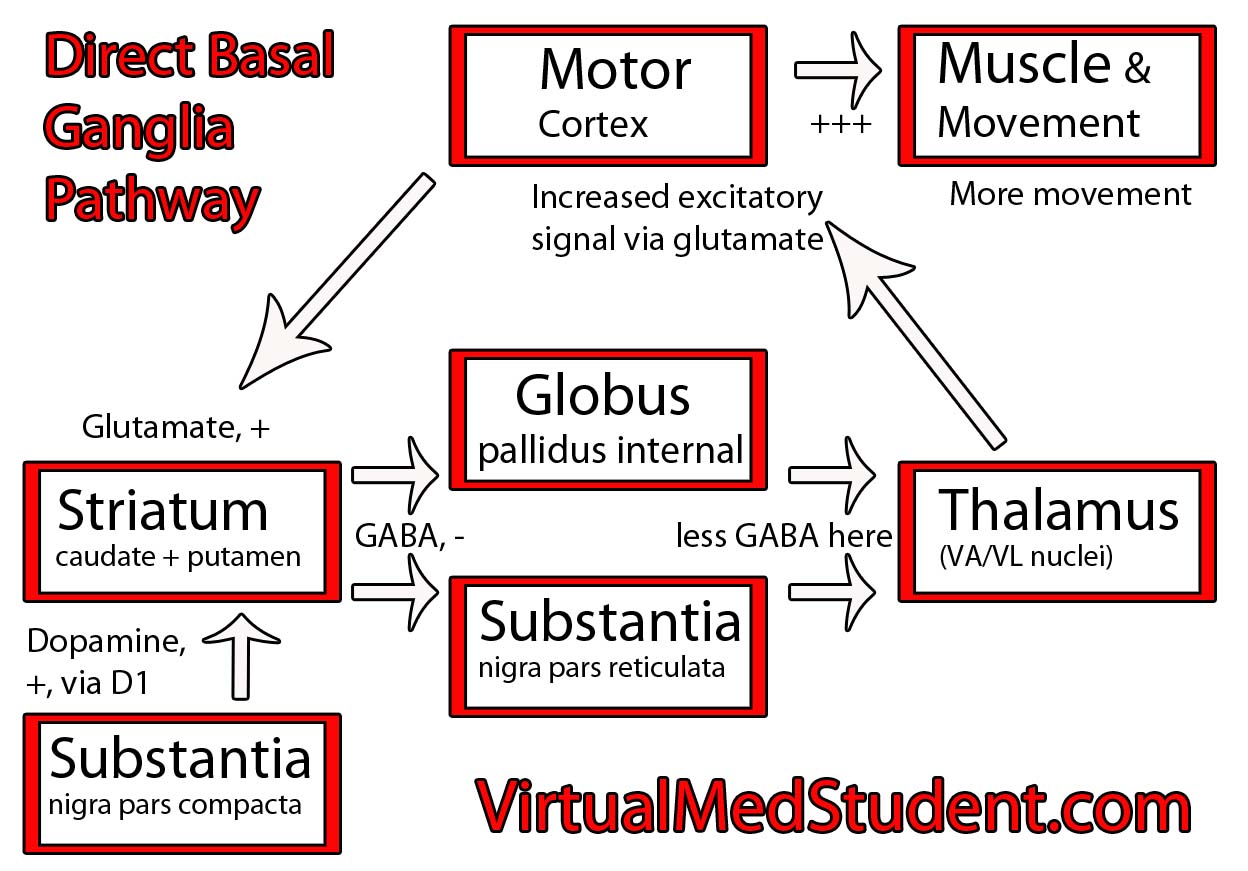The basal ganglia are a complex system of several discrete collections of neurons within the brain. These collections of neurons interact closely with the part of the cerebral cortex that initiates movement. As such, the basal ganglia are important in fine-tuning the starting and stopping of movements.
The term "basal ganglia" encompasses several separate, but interrelated neuron populations. The putamen, caudate, globus pallidus internus (GPi), globus pallidus externus (GPe), substantia nigra (SN), and subthalamic nucleus (STN) are all discrete neuron populations that, as a whole, compose the "basal ganglia". These named populations of neurons work together to achieve a common goal. The term "striatum" includes the caudate and putamen only, and the term "lentiform nuclei" includes the putamen and globus pallidus.
The basal ganglia modulate movement through a complex loop of inhibitory and excitatory signals. When you decide to move, your frontal lobes send an excitatory signal via the neurotransmitter glutamate to the striatum (ie: caudate and putamen).
The neurons in the striatum then send an inhibitory signal to the globus pallidus internus (GPi) and the substantia nigra pars reticulata (SNpr). As a result, GPi and SNpr are no longer able to inhibit the thalamus, which is their normal resting function.
The thalamus now finds itself disinhibited and is able to send a message back to the cerebral cortex saying it is ok to allow the desired movement to occur. The motor cortex then sends a message down the spinal cord causing the desired movement.
So where does the neurotransmitter dopamine enter the picture? Dopamine is secreted by a different part of the substantia nigra known as the pars compacta. These neurons secrete dopamine onto specific cells in the striatum. The dopamine interacts with the D1 (dopamine-1) receptors on these cells causing them to become more active (ie: dopamine has a stimulatory effect via the D1 receptor).

The overall effect is that dopamine activates the striatum (ie: caudate and putamen), which, as we discussed above, inhibits the internal segment of the globus pallidus. The GPi is then unable to inhibit the thalamus, which in turn allows the thalamus to stimulate the cortex. Huh??? Simply stated, dopamine causes an increased propensity towards movement. Dopamine has a similar role, but via a different mechanism in the indirect pathway, which is discussed in detail in another article.
Importance in Disease
When the basal ganglia malfunction it causes unwanted movements or a failure to initiate movements. The classic basal ganglia disease is Parkinson’s disease, which has elements of both unwanted movements (resting tremors) and difficulty initiating movement (bradykinesia). Other diseases such as hemiballismus, in which the affected person violently flings an extremity, can occur when there is damage to the subthalamic nucleus (the subthalamic nucleus is discussed in more detail on the indirect pathway article).
Overview
The direct basal ganglia pathway fine-tunes motor movements. It involves both excitatory and inhibitory signals through the striatum, globus pallidus, substantia nigra, thalamus, and motor cortex. Diseases such as Parkinson’s disease and hemiballismus may occur when there is damage to one of the components of the basal ganglia.
Related Articles
References and Resources
- Baehr M, Frotscher M. Duus’ Topical Diagnosis in Neurology: Anatomy, Physiology, Signs, Symptoms. Fourth Edition. Stuttgart: Thieme, 2005.
- Bickley LS, Szilagyi PG. Bate’s Guide to Physical Examination and History Taking. Ninth Edition. New York: Lippincott Williams and Wilkins, 2007.
- Nolte J. The Human Brain: An Introduction to its Functional Anatomy. Sixth Edition. Philadelphia: Mosby, 2008.
- Purves D, Augustine GJ, Fitzpatrick D, et al. Neuroscience. Fourth Edition. Sinauer Associates, Inc., 2007.